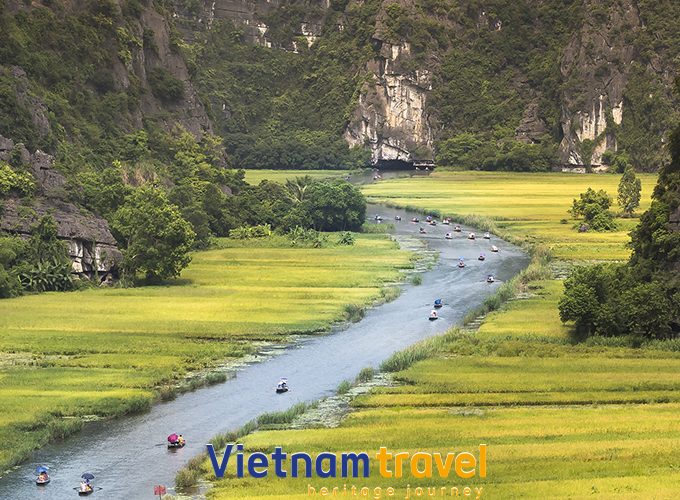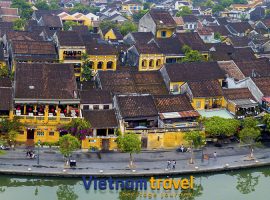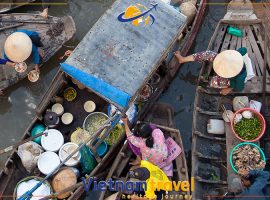The DMZ is a living museum of Vietnam’s wartime history. It was the site of some of the most intense battles and strategic operations during the Vietnam War, including the infamous Battle of Khe Sanh and the Ho Chi Minh Trail. Visiting the DMZ allows travelers to gain a deeper understanding of the war’s impact on Vietnam and its people, as well as the resilience and spirit that led to the country’s reunification.
For travelers interested in Vietnam heritage tours, the DMZ provides a unique opportunity to connect with the country’s history and pay tribute to those who lived through one of the most challenging periods in modern history. Its proximity to other historical sites in central Vietnam, such as Hue and Quang Tri, makes it a convenient addition to any Vietnam tour.
Top Experiences in the DMZ
-
- Vinh Moc Tunnels
Often compared to the Cu Chi Tunnels near Ho Chi Minh City, the Vinh Moc Tunnels are an underground network where villagers lived and worked during the war. Exploring these tunnels offers a glimpse into the ingenuity and resilience of the Vietnamese people.
- Hien Luong Bridge and Ben Hai River
This iconic bridge spans the Ben Hai River, which once marked the border between North and South Vietnam. The bridge and its surrounding monuments symbolize the division and eventual reunification of the country.
- Khe Sanh Combat Base
One of the most famous battle sites of the Vietnam War, Khe Sanh was a strategic military base. Today, visitors can explore the remnants of the base, including bunkers, aircraft, and a museum showcasing artifacts from the war.
- Truong Son National Cemetery
This solemn cemetery is the final resting place for thousands of Vietnamese soldiers who fought and died along the Ho Chi Minh Trail. It’s a place of reflection and remembrance.
- Ho Chi Minh Trail
Stretching from North to South Vietnam, the Ho Chi Minh Trail was a vital supply route during the war. Sections of the trail near the DMZ offer opportunities for hiking and learning about its historical significance.
- Quang Tri Citadel
This ancient citadel was heavily damaged during the war but has since been partially restored. It serves as a symbol of the region’s resilience and enduring spirit.
- Dakrong Bridge
A key crossing point along the Ho Chi Minh Trail, Dakrong Bridge is surrounded by stunning scenery and offers a glimpse into the strategic importance of the region during the war.
Why the DMZ is Perfect for Indochina Heritage Tourism?
The DMZ’s historical significance makes it a compelling destination for Indochina heritage tourism. Its stories of conflict and resilience resonate with the broader history of Southeast Asia, particularly in countries like Cambodia, Laos, and Myanmar, which also experienced the impacts of war and colonialism.
For travelers combining their trip with Cambodia heritage travel, Laos heritage travel, or Thailand heritage travel, the DMZ offers a poignant contrast to the ancient temples and cultural landmarks of neighboring countries. Its focus on modern history and its lessons of peace and reconciliation make it a meaningful addition to any Southeast Asia itinerary.
Tips for Visiting the DMZ
-
- Best Time to Visit: The dry season (February to August) is ideal for exploring the DMZ, as the weather is pleasant and the roads are easier to navigate.
- Getting There: The DMZ is located in Quang Tri Province, about 2-3 hours from Hue by car or motorbike. Guided tours are available from Hue and Dong Hoi.
- Accommodation: While there are limited options within the DMZ itself, nearby cities like Hue and Dong Hoi offer a range of accommodations.
- Local Cuisine: Don’t miss the chance to try local specialties like banh khoai (Hue-style pancake) and bun bo Hue (spicy beef noodle soup).
- Respectful Travel: The DMZ is a place of historical and emotional significance. Dress modestly, speak respectfully, and follow the guidance of local guides.
- Guided Tours: Consider hiring a local guide to gain deeper insights into the history and significance of the sites. Many guides are veterans or have personal connections to the war.
Conclusion
The DMZ is more than just a historical site—it’s a place where the past comes alive, offering lessons of resilience, courage, and hope. From the underground tunnels of Vinh Moc to the solemn grounds of Truong Son National Cemetery, this region tells a story that is both heartbreaking and inspiring.
For travelers embarking on Vietnam heritage tours or exploring the broader Indochina region, the DMZ is a destination that should not be missed. Its unique blend of history, culture, and natural beauty makes it a powerful addition to any Southeast Asia itinerary. So pack your bags, set your sights on the DMZ, and prepare to embark on a journey through Vietnam’s history and heritage.




























